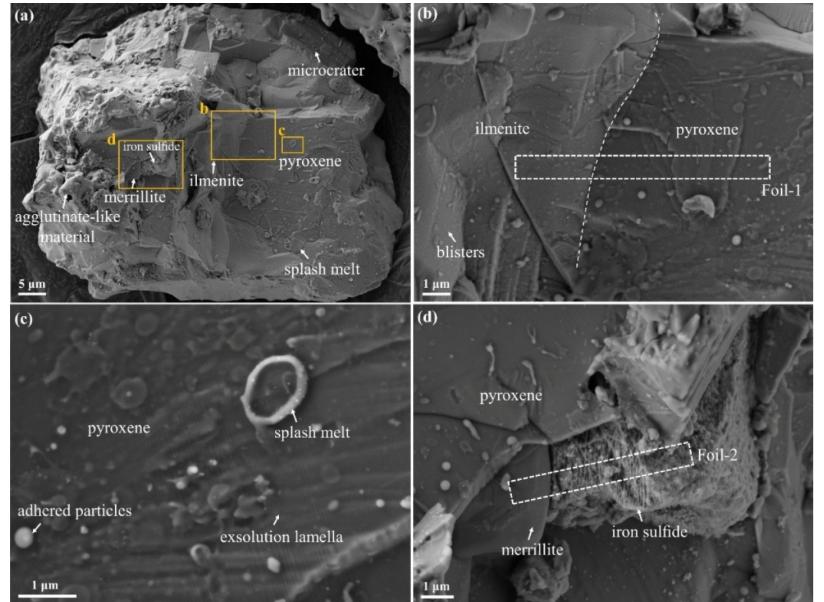On Earth, continuous weathering can eventually turn a hard rock into soil. In fact, there are also space weathering effects on the moon such as micrometeorite impacts, solar wind and galactic cosmic ray radiation. Using a series of analysis methods, mainland researchers obtained information on the space weathering of the surface of a single Chang'e-5 lunar soil particle. The relevant research results were recently published online in the Geophysical Research Letters.

Lunar soil is formed by the long-term space weathering of lunar rocks. Through the study of lunar soil, we can deeply understand the interaction process and mechanism of impact and solar wind radiation with lunar surface material, and understand the evolution of lunar surface material and the change process of space environment. However, the size and structure of a lunar soil are small, and it is difficult to distinguish the characteristic differences between micrometeorite impacts and solar wind irradiation.
The Institute of Geology and Geo-Earth Science of the Chinese Academy of Sciences, together with the scientific research team of the Beijing High Voltage Science Center and the National Space Science Center, used a series of analytical methods such as single-particle sample manipulation, scanning electron microscopy morphology observation, focused ion beam fine processing, transmission electron microscopy structure analysis, etc., to obtain space weathering information on the surface of silicates, oxides, phosphates and sulfides on the surface of a single Chang'e 5 lunar soil.
The results of the study showed that the mineral phases on the surface of the lunar soil particles exposed for a long time had a re-deposition layer rich in silicon and oxygen, and the solar wind irradiation damage layer was down, but the structural and chemical composition changes of the solar wind irradiation damage layer were related to the type of matrix minerals. Samples collected by the American Apollo program and the Soviet Union's Lunar Are all in the low latitude range of the Moon, while the Chang'e-5 sample site is located in the middle latitude of the Moon, which provides a unique perspective for space weathering research at different latitudes of the Moon.